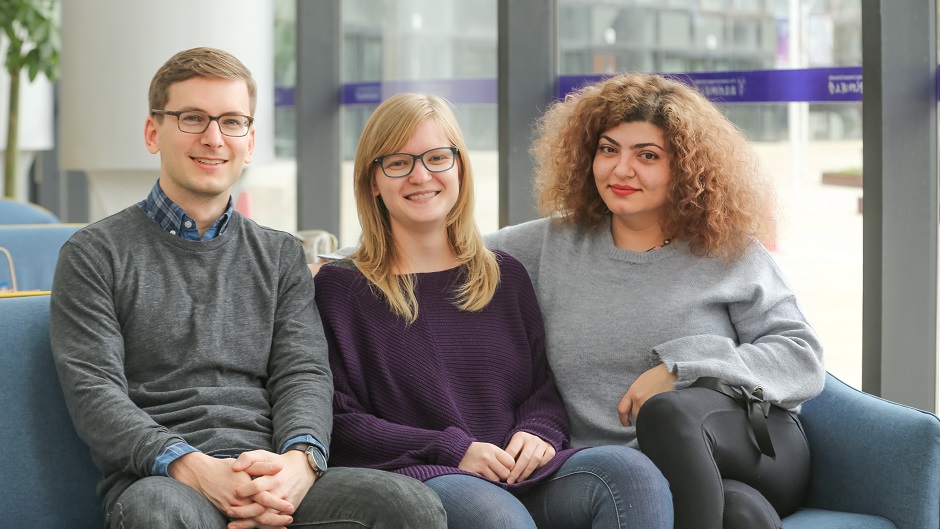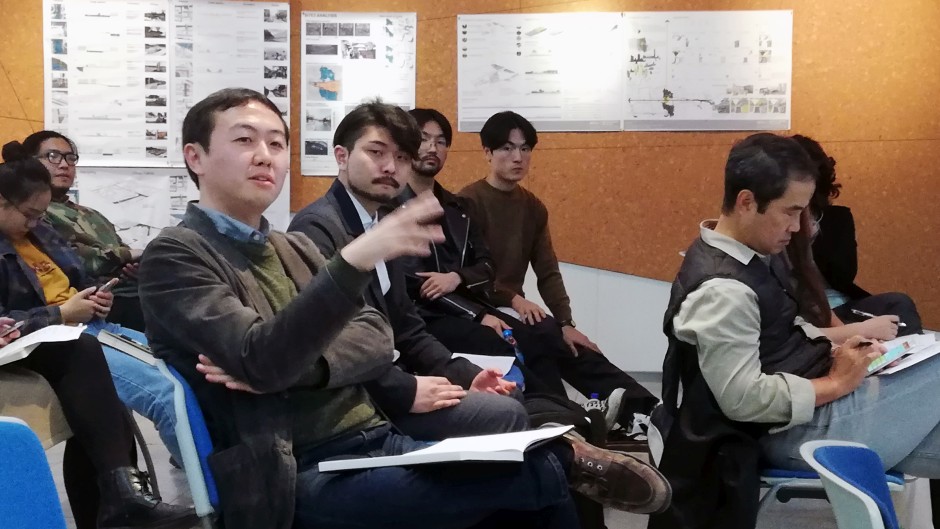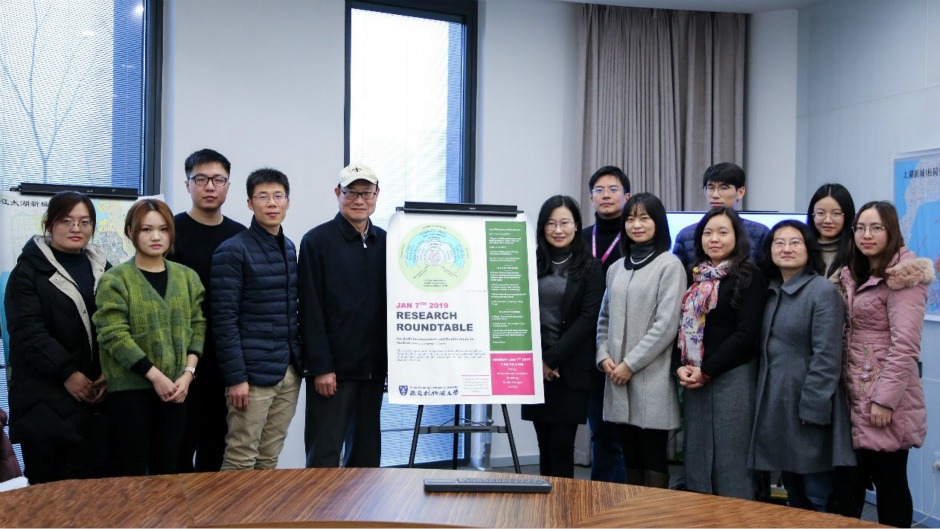02 Apr 2019
Three Xi’an Jiaotong-Liverpool University international students are helping transform teaching and learning in the Department of Urban Planning and Design through their roles as teaching assistants.

(Pictured above left to right: students and teaching assistants Jesse DiMeolo, Anna Vichnevetskaia and Marie Gazazyan.)
The students are working with lecturer Dr Ying Chang to teach undergraduates studying Neighbourhood Planning using a range of teaching methods including fieldwork, community workshops, and immersive learning sessions.
The Neighbourhood Planning module, which centres on a real-life community project, was jointly awarded the second prize for innovative teaching in the XJTLU National University Teaching Innovation Awards organised by Institute of Leadership and Education Advanced Development (ILEAD) last year.
Dr Chang says the module uses various research-led and student-centred methods, which she believes is the future of higher education.
“By weaving pioneering teaching methods into a student-led community project, we have created a dynamic approach to learning, positioned around active learning and engagement,” she says.
“We combined flipped classroom, fieldwork, open space facilitation skills, and peer learning to optimise the interaction with students, lecturers and the external world.
“We use pre-recorded videos and hand-drawn posters to replace conventional Powerpoints and text with an aim to provide equal opportunities for all students, no matter what their starting position is.”

Postgraduate student and teaching assistant, Anna Vichnevetskaia, says flipped classrooms help students engage in the module.
“The flipped classroom is a student-centred approach that allows students to focus for longer periods of time,” she says.
“It creates a far more intrinsic way to learn compared to traditional styles.”
Vichnevetskaia plans to use her experiences teaching at XJTLU in the future with the aim of becoming a university lecturer.

Dr Chang says one of the most important aspects of this innovative approach to teaching and learning is that it creates an educational space suitable for all students, from kinaesthetic to visual learners.
“Creating an inclusive and engaging environment in universities is key to the future of higher education,” she says.
While Dr Chang has run the Neighbourhood Planning module for the past seven years, this is the first time international postgraduate students have assisted with the teaching and organisation.
Dr Chang says she is glad to see cultural exchange occur through the teaching practice of international postgraduate students.
“They have brought their life experiences and different perspectives to broaden the students’ world view,” she says.
“In turn, the students’ reactions have also helped them understand Chinese society better.”

One of the first activities the postgraduate students conducted was a neighbourhood walk for Year 2 students to help them understand and appreciate a nearby resettlement area for former agricultural workers.
Armenian student Marie Gazazyan says it was an opportunity for students to see community planning in the real world.
“Students were able to get first-hand experience of what community planning actually looks like and what the results can be,” she says.
“On a personal level, it was particularly interesting to see the direct impact of China’s urbanisation and the differences in culture that affect urban planning, compared to my home country.”
Postgraduate student Jesse DiMeolo, who comes from the United States, agrees that the neighbourhood walks were effective in building the students’ understanding of urban planning.
“The neighbourhood walk required students to get away from their workstations and classrooms and to meet with the local community face-to-face,” he says.
“This gives the students a reality check and helps reinforce the idea of why we strive to build better, stronger communities.”
Abel Salam, a Year 2 student in the Department of Urban Planning and Design, says the teaching methods helped him engage with theoretical concepts.
“I really love coming to class,” he says.
“As an international student, it can sometimes be challenging to communicate effectively, but the peer-to-peer learning method has meant we all feel relaxed and at ease during lessons.
“In particular, the open space and peer learning poster work we have done have pushed me to be more creative and active in initiating discussion.”
By Tara Hunt, edited by Rosanna Galvin
Photographs by Bingbing Zhang
02 Apr 2019
RELATED NEWS

University of Seoul visitors share ideas on urban design
Staff and students from the Department of Urban Planning and Design at Xi’an Jiaotong-Liverpool University welcomed guests from the University of Seoul, Sout...
Learn more

Planning for a healthier future through urban design
Xi’an Jiaotong-Liverpoool University is working with the local Suzhou government and the University of Hong Kong to investigate connections between built env...
Learn more







